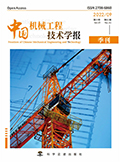

《机电一体化系统设计》一书围绕机电一体化系统的构成展开, 系统性地阐述了该领域主要组成部分的设计原理、方法及其应用。全书分为七章, 包括概述、机电一体化系统的总体设计、机械系统设计、动力系统设计、检测系统设计、控制系统设计以及典型系统设计。在工业4. 0背景下及数字孪生技术的推动下, 机电一体化系统已由单一的机械与电气耦合。本书不仅强调理论与实际的融合, 且紧跟技术发展的前沿, 为读者奠定了坚实的理论基础与实践经验。同时, 书中内容对于促进机电一体化技术的未来发展具有重要意义。
“Mechatronic System Design” focuses on the composition of mechatronic systems, systematically presenting the design principles, methods, and applications of the key components in this field. The book is divided into seven chapters: an introduction, overall design of mechatronic systems, mechanical system design, power system design, detection system design, control system design, and design of typical systems. In the context of Industry 4. 0 and driven by digital twin technology, mechatronic systems have evolved from simple mechanical-electrical coupling to more complex, integrated systems. This book not only emphasizes the integration of theory and practice but also stays at the forefront of technological advancements, providing readers with a solid theoretical foundation and practical experience. Additionally, the content of the book is of great significance into advancing the future development of mechatronic technology.